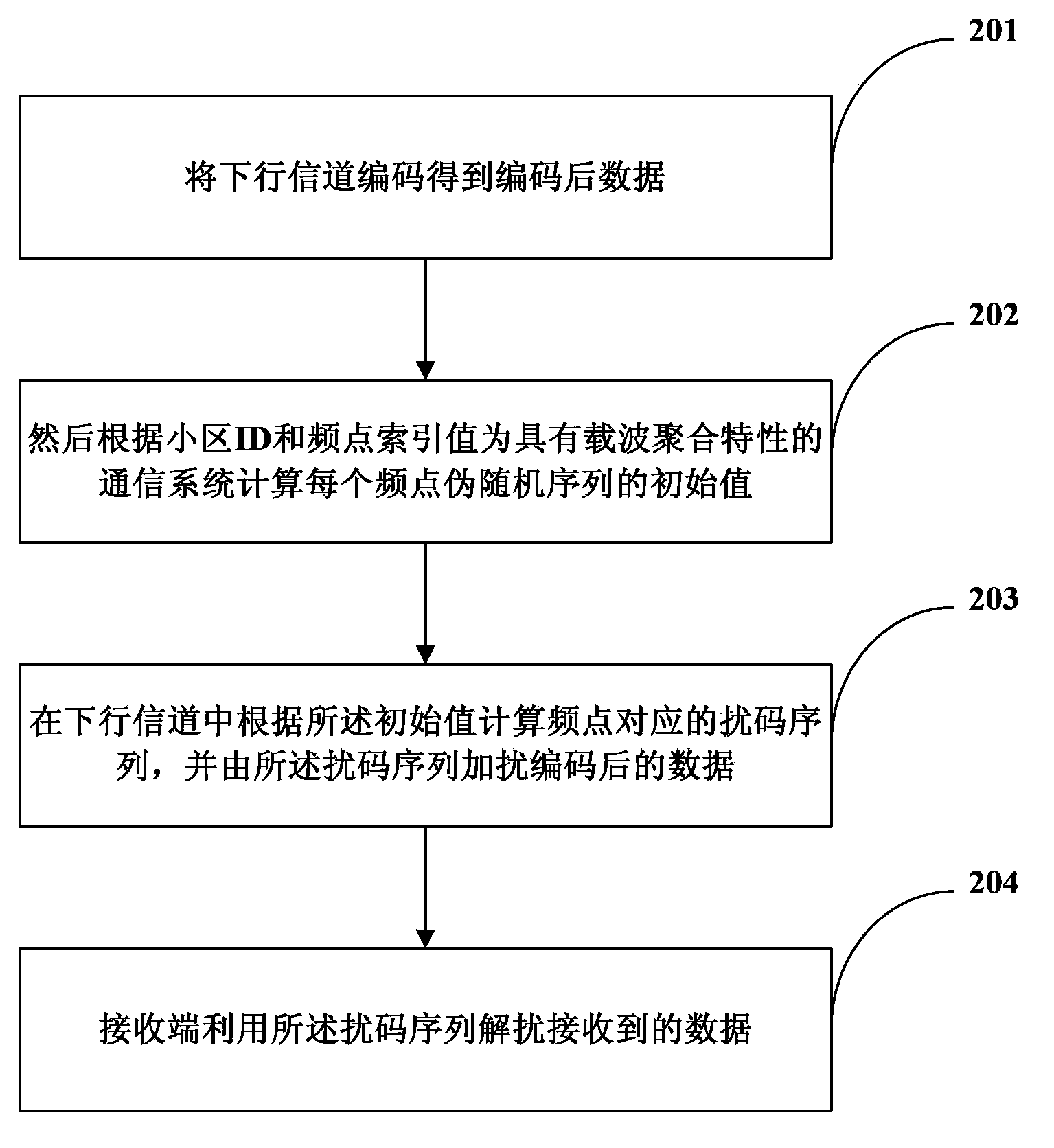Method for improving demodulation correctness
A technology of accuracy rate and frequency point, which is applied in the field of improving demodulation accuracy rate, can solve problems such as peak-to-average ratio, achieve the effect of reducing peak-to-average ratio and improving accuracy rate
- Summary
- Abstract
- Description
- Claims
- Application Information
AI Technical Summary
Problems solved by technology
Method used
Image
Examples
Embodiment 1
[0051] The initial value of the pseudo-random sequence of each frequency point is calculated by the following formula:
[0052] c init = 2866 × ( 2 * SubBandIndex + 1 ) × 2 9 + N ID cell .
[0053] Among them, SubBandIndex represents the frequency point index value, Represents the cell ID.
[0054] The initial value of the scrambling code is 31-bit in total, including a 22-bit mixer and a 9-bit cell ID. The 22-bit mixer is composed of the following formula:
[0055] 22-bit mixer=2866×(2*SubBandIndex+1).
[0056] The above formula can be applied to downlink control channels of wireless communication systems with carrier aggregation features, including: PCFICH, physical HARQ indicator channel (P...
Embodiment 2
[0082] The initial value of the pseudo-random sequence of each frequency point is calculated by the following formula:
[0083] c init = ( n SI - RNTI + 1 ) × ( mod ( SubBandIndex , 128 ) + 1 ) × 2 9 + N ID cell .
[0084] Among them, n SI-RNTI The wireless network temporary identification number updated for system information, for all users of the same frequency point, this value is the same, SubBandIndex represents the frequency point index value, Represents the cell ID.
[0085] The ini...
Embodiment 3
[0098] The initial value of the pseudo-random sequence of each frequency point is calculated by the following formula:
[0099] c init = ( n RNTI + 1 ) × 2 16 + mod ( SubBandIndex , 128 ) × 2 9 + N ID cell . Among them, n RNTI is the wireless network temporary identification number, SubBandIndex represents the frequency point index value, Represents the cell ID.
[0100] The initial value of the scrambling code is 31-bit, including 15-bit n RNTI , 7-bit frequency point index value SubBandIndex, 9-bit cell ID.
[0101] The above formula can be applied to the downlink service c...
PUM
 Login to View More
Login to View More Abstract
Description
Claims
Application Information
 Login to View More
Login to View More - R&D
- Intellectual Property
- Life Sciences
- Materials
- Tech Scout
- Unparalleled Data Quality
- Higher Quality Content
- 60% Fewer Hallucinations
Browse by: Latest US Patents, China's latest patents, Technical Efficacy Thesaurus, Application Domain, Technology Topic, Popular Technical Reports.
© 2025 PatSnap. All rights reserved.Legal|Privacy policy|Modern Slavery Act Transparency Statement|Sitemap|About US| Contact US: help@patsnap.com



